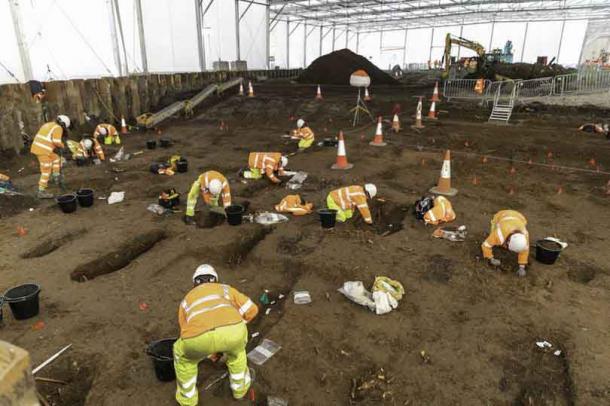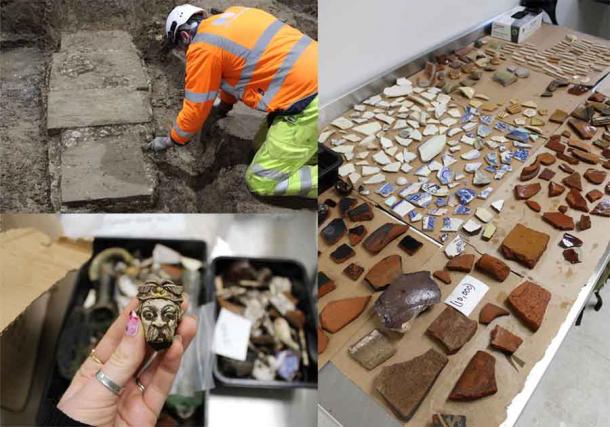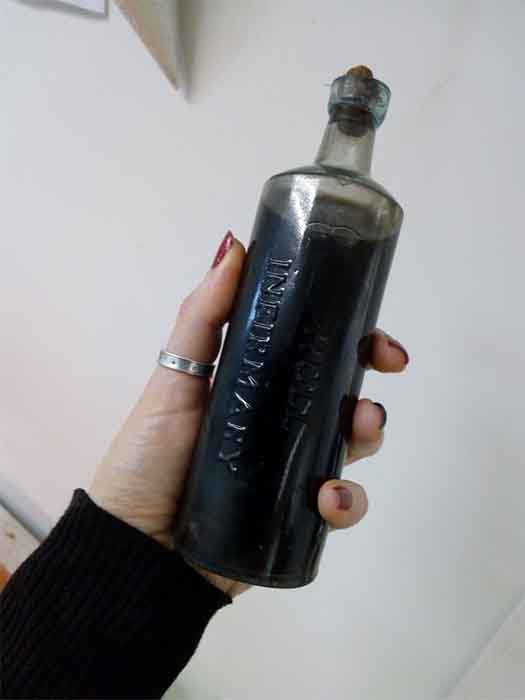Archaeologists have been trying to work out why a sealed blue glass mystery bottle was left between a woman’s legs in a Hull burial. But that’s not all. They’re also trying to work out what on Earth was the liquid it contained.
The History of Hull Burials at Trinity Burial Ground
The term “Hull burials”, in this case, does not refer to Viking chiefs laid to rest within the innards of great wooden ships, but to people laid to rest in the port city of Kingston upon Hull, in England’s East Yorkshire. Hull was an important medieval wool port that in 1293 AD passed from the monks of Meaux Abbey to Edward I, king of England, at which time Hull became Kingston (King’s town) upon Hull.
Located where the River Hull meets the Humber Estuary this ancient city prospered as the chief seaport controlling all shipping to and from England’s central inland waterways, most of which converge on the River Humber estuary. Perhaps most relevant today, Hull’s Wilberforce House represents the birthplace of William Wilberforce (1759 – 1833) who is famously the British politician, philanthropist, and a leader of the movement to abolish slavery.

It is in this old world maritime context that Hull’s biggest ever archaeological dig unearthed the mysterious bottled liquid between a skeleton’s legs. The Hull burial was just one being excavated at the Holy Trinity Burial Ground on the south side of Castle Street in Hull. The Hull burial ground has been protected by a huge tent to ensure respectful excavation of the human remains at the site.
According to Highways England , the hope is that “the site will provide a wealth of information about the lives of the full spectrum of Hull society at a time when the town’s population was rapidly expanding as commercial and industrial activity intensified.” As part of the project, archaeologists will be looking into historic town defenses, the historic docks, a sample of Hull burial remains and remains of a late 18th century gaol.

Digging into Hull’s Post-Mediaeval, Mega-Necropolis
A 2011 article published in the BBC announced that the Hull Infirmary was to get a £7 million ($9.64 millon) refurbishment grant and explained that the original hospital opened in temporary premises in George Street in 1782. Permanent premises opened in 1784 on Prospect Street and John Alderson (1757-1829), a physician at Hull General Infirmary from 1792 and in 1814, founded the Sculcoates Refuge for the Insane.
Back in May 2020 a Hull Daily News article explained that the secrets of the massive Hull city center burial site would soon be revealed, and that “44,000 bodies” are buried beneath the medieval streets. The plan at that time was for thousands of bodies to be exhumed at Holy Trinity Burial Ground in Castle Street, a site that was functional between 1783 and 1861. This planned dig would explore what is known as one of the largest post-medieval cemeteries to have ever been excavated in the north of England.

Got a Slab of Cash – We’re off to the Archaeological Races
The above described plans were all made real last year when an astonishing £355 million ($488 million) was awarded to Hull, to fund a new city center refurbishment program known as the A63 Castle Street upgrade. Not only did this slab of cash bolster local restaurants, but 70 archaeologists were employed to conduct the excavations and to interpret the thousands of findings. Now, just over a year later, around 1,500 exhumed skeletons have been recorded at the Trinity Burial Ground.
According to Hull Daily Mail the fully intact, sealed bottle was made from a blue-colored glass, and it was marked with the words “Hull Infirmary.” The archaeologists reported that the bottle appears to have been “deliberately placed” within the grave, between someone’s legs, and adding to the unfolding mystery, the vessel contained a mysterious brown liquid.

This Is Why We Are Not Archaeologists: What’s Inside the Bottle?
Osteology supervisor, Katie Dalmon, told Hull Daily News that woman was buried in the middle of a burial stack and tests determined that she was in her 60s at her time of death. Dr. Dalmon said she was suffering from “residual ricketsand osteoporosis” and that the mystery bottle had been deliberately placed with the individual and was not part of any backfill. Most of us would assume this was some kind of medical lotion, potion or cream, but that would demonstrate why we are not all archaeologists.
Samples of the mystery liquid were sent to a testing lab at Nottingham Trent University and it was soon confirmed that the liquid was a mixture of sodium, potassium. and phosphorus. This means the liquid has no obvious pharmaceutical applications. In fact, there is a high chance that this liquid would only serve to make your grass green because, according to Dalmon, the likelihood is “that the liquid is probably urine.”
Now remember, don’t spend too much time pondering all this. History is inconceivable complex and we must bear in mind that if the woman was a resident in the Sculcoates Refuge for the Insane maybe the bottle was simply her favorite bottle of urine, picked out from her extensive collection, to be included with her. This is just one of the findings unearthed at the Hull burial site as part of what is the largest excavation of an 18th to 19th century burial ground in the north of England.








